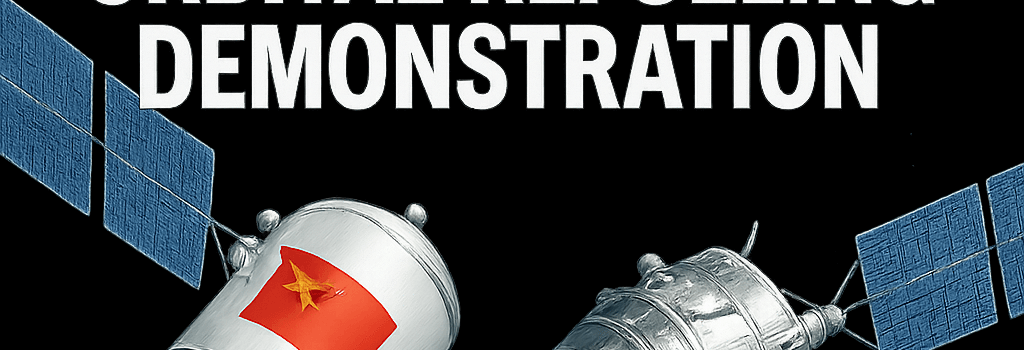China’s First Geosynchronous Orbital Refueling Demonstration

In July 2025 China achieved a breakthrough in orbital servicing by performing the first known high-altitude satellite refueling in geosynchronous orbit. The state space contractor Shanghai Academy of Spaceflight Technology launched SJ-21 in 2021 and SJ-25 in January 2025. Civilian trackers report the two satellites docked at 35,786 km above Earth on July 2 and have remained conjoined since.
China’s Landmark High-Altitude Refueling Demonstration
The mission combined two specialized vehicles: SJ-21, originally a space debris mitigation tug, and SJ-25, expressly built for on-orbit fuel replenishment and life extension. Open-source imagery from Swiss firm s2a systems captured SJ-21 and SJ-25 approaching at relative velocities under 1 m/s, while US Space Force GSSAP assets monitored the operation from adjacent geosynchronous slots.
- SJ-21 Specifications: mass 4 metric tons, hydrazine tank capacity 800 kg, robotic manipulator arm reach 4.2 meters.
- SJ-25 Specifications: mass 3.2 metric tons, twin docking couplers, high-pressure transfer pumps rated at 2 kg/s, dual redundant valves for hydrazine and nitrogen tetroxide.
- Orbit Data: geostationary altitude 35,786 km, delta-v budget 150 m/s for docking maneuvers.
Technical Architecture of In-Orbit Refueling System
The refueling interface relies on standardized fluid couplers with active capture latches and pyro-valve isolation. Once mechanical latching occurred, SJ-25’s pump module activated, pressurizing the hydrazine transfer line to 1.5 MPa. Flow sensors and pressure transducers fed real-time telemetry to ground stations, confirming propellant transfer within a 0.5 kg error margin.
Docking Guidance and Control
Guidance, navigation, and control (GNC) used integrated star trackers and LIDAR ranging to achieve a closure rate of 0.2 m/s. Reaction control system thrusters burned monomethylhydrazine with mixed oxides, calibrated for minimal plume impact on sensitive optical surfaces.
Strategic and Military Ramifications
Dual-use in-space servicing technologies have clear civilian benefits but also potential military applications. Orbital refueling extends the operational life of strategic communications and missile early warning satellites beyond their original design life. In a contested scenario, a refueled satellite could be re-tasked for electronic intelligence or repositioned for offensive counter-space operations.
Retired Lt. Gen. John Shaw emphasized that dynamic space operations will reshape conflict in geosynchronous orbit by overcoming fixed-propellant limits, heightening the need for agile inspection and defense capabilities.
International Monitoring and Response
The US Space Force GSSAP constellation, with four active satellites conducting rendezvous missions since 2014, closely surveilled the SJ-21/SJ-25 pairing. Observers note that GSSAP approaches at minimum-energy trajectories can be evaded by more maneuverable refueled platforms, raising the bar for space domain awareness and defensive countermeasures.
Future Outlook for Orbital Servicing Technologies
Competition in the in-space servicing market is heating up. Northrop Grumman’s Mission Extension Vehicle (MEV) series has restored life to commercial comsats since 2019 but lacks fluid transfer capability. Meanwhile, the US Space Force has contracted Astroscale for a military refueling demo planned for 2026, aiming to validate NATO-compatible coupler standards and automated docking protocols.
Regulatory and Policy Considerations
- Establishment of international refueling etiquette to prevent interference and collision risks.
- Certification standards for fluid-transfer safety and cross-operator compatibility.
- Debate over arms-control measures addressing co-orbital servicing as potential anti-satellite vectors.
Conclusions and Next Steps
As SJ-21 and SJ-25 remain docked, analysts await observable post-docking delta-v changes indicating successful transfer. Should China confirm a completed refueling, it will mark a paradigm shift in geosynchronous operations, prompting both enhanced servicing architectures and reinforced space security frameworks.
Reporting by Stephen Clark. Analysis by industry experts and space policy specialists.